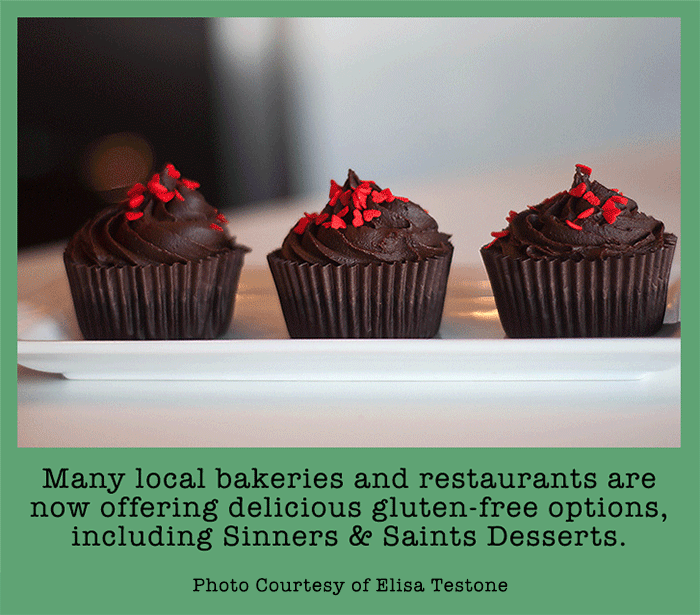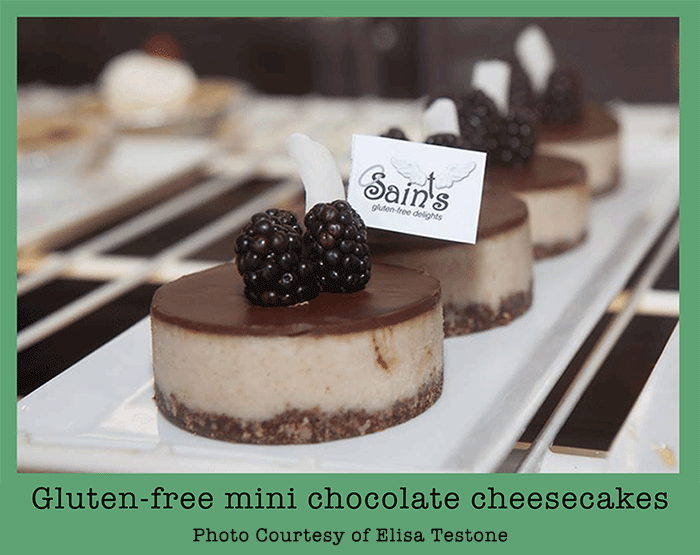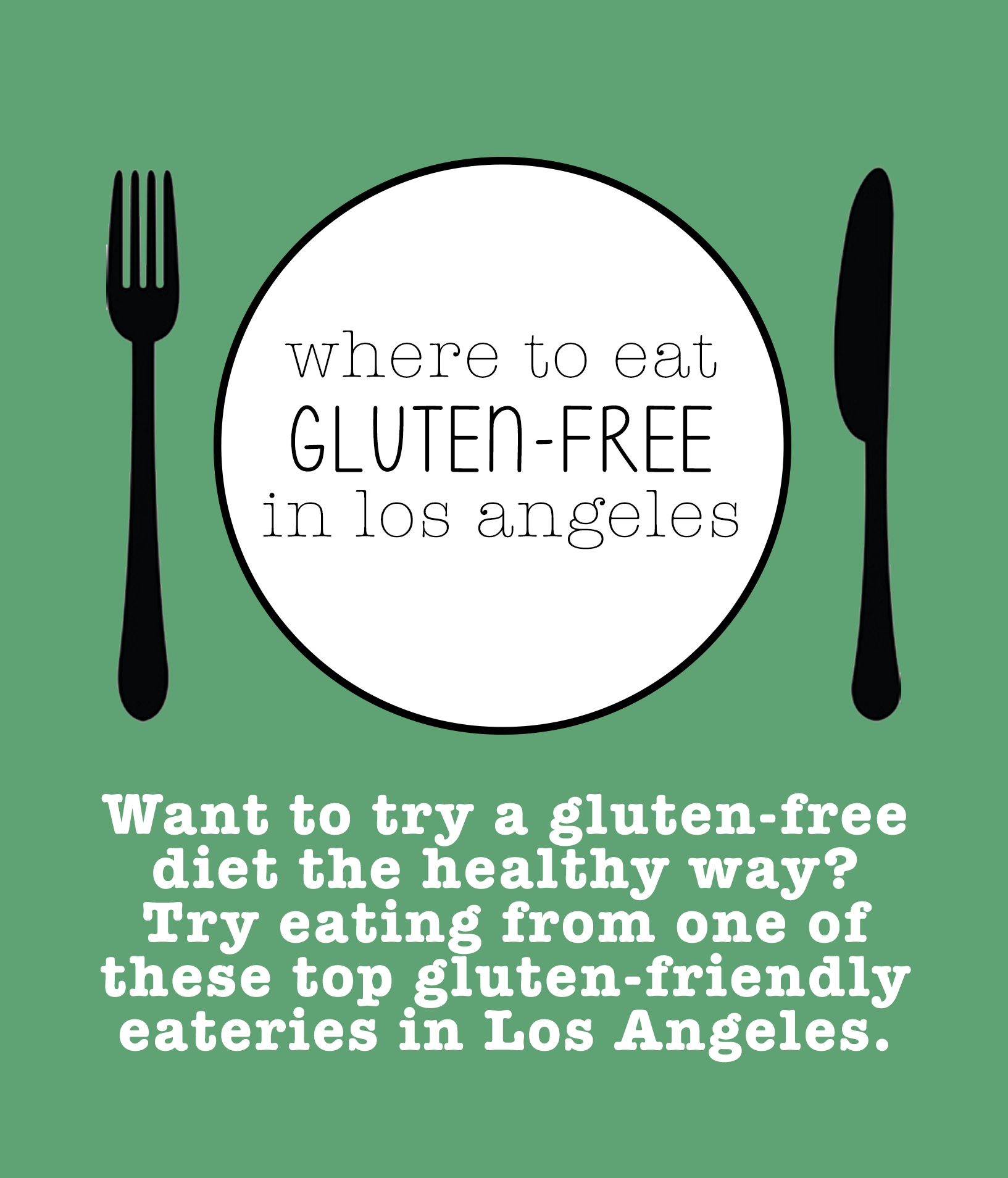

Both nutrition facts were almost exactly the same, except right above the bar code of one of the yogurts, Smith noticed the label “GLUTEN-FREE” in large letters.
“Why does one say gluten-free and one doesn’t have a gluten-free label on it, does that mean it actually contains gluten? If you’re an uneducated consumer and you associate gluten-free with healthy, then of course you’re going to choose the gluten-free labeled item,” said Smith, dietitian and nutritionist.Both yogurts are in fact gluten-free. While the ‘gluten-free’ label on an all-natural product may confuse the average person, the label may still be a major factor in the consumer's decision to purchase that product.
Smith, a member of the medical advisory board for the Celiac Disease Foundation (CDF), said that gluten is a general name for the proteins found in wheat and helps food maintain its shape.
Today, the term gluten-free has become extremely recognizable to the average person. The gluten-free industry has grown 44 percent from 2011 to 2013, according to Mintel, a multinational food marketing research firm.
According to Smith, the trend began after the release of a 2001 study that showed a rise in the prevalence of celiac disease in the United States. Since then, manufacturers have hyped gluten-free products convincing non-celiac consumers, restaurants, and even cosmetic producers that they must get rid of gluten.
For celiac patients like Smith, that label can be a matter of life-or-death. But, the mass majority of shoppers that choose to purchase gluten-free alternatives know little about the health risks.

A Matter of Life-or-Death
Celiac disease affects 1 percent of the population, according to the CDF. Sufferers, who are genetically predisposed, experience damage in the small intestine after gluten ingestion.
“We have to eat gluten-free, it’s like our medicine. We just don’t have a choice,” said Marc Riches, celiac and chairman of the Celiac Disease Foundation.
While those with celiac disease have no choice but to eat gluten-free, the gluten-free market caters to a much larger population than just the 1 percent of affected celiacs. Twenty-four percent of consumers currently eat, or have someone in their household who eats gluten-free foods, according Mintel research group.
The Myth Behind Gluten
The study found that a vast majority of non-celiac consumers are choosing to eaten gluten-free. Three-quarters of non-celiac consumers opt for gluten-free foods because they believe it is healthier, according to Mintel. With the correlation of gluten-free being healthy, it’s natural for consumers to choose gluten-free products.
Riches, the CDF chairman, thinks that celebrities and Hollywood has always had an impact on diet trends. He explained that diet trends have existed for years, “the Atkins diet, Beverly Hills diets, everybody went low-carb for a while, everybody went low sugar.”
“I think they’re always looking for food trends and I don’t know why exactly gluten-free became this huge hit, but it certainly seems like it is,” Riches said.
Smith believes that gluten-free manufacturers are driving the trend, and “that they’ve marketed the gluten-free products as something that is beneficial to everyone.”
While the trend certainly has given off a reputation for making gluten-free consumers healthier, research has not supported the benefits of gluten-free alternative diets.
“It’s not some magical diet thing, and that’s probably the biggest misconception about all of it,” Riches said.
Many consumers have jumped the bandwagon of choosing gluten-free products due to an idea that they are healthier and potentially less fattening. Smith believes that this “boom and widespread application of the gluten-free diet is successful due to the marketing of it being healthy for everyone.”
While removing the gluten food group from your diet can have benefits, most consumers opt for gluten-free alternatives, which can actually be more harmful than the original gluten version. The component gluten is the protein portion of the grain and is the most nutritious part of the grain.
“By removing the protein portion, and substituting it with refined starches, carbohydrates, refined sugars, and increased fat, there’s nothing more nutritious about it. It’s actually more deficient in nutrients,” Smith said.
Most gluten-free products are highly processed in order to mimic the texture of the naturally gluten product. Gluten-free products also have a much shorter shelf life, so in order for items to last longer, food manufactures have to include a variety of unhealthy ingredients.
“The main reason why people have touted the gluten-free diet as a successful weight-loss diet, is because they have eliminated an entire food group from their diet, and they haven’t replaced it with anything. We know that it’s not effective unless you’re eliminating foods without replacing them,” Smith said.
For some the gluten-free diet has been effective, but only because they are not replacing items with processed gluten-free alternatives. Mara Simon-Meyer has been eating gluten-free by choice for a little over a year. She decided to give the diet a try after hearing positive feedback from a friend. She believes that the absence of gluten in her diet is responsible for her body’s healthy transformation.
“I’ve found that I have more energy and I feel less bloated. I also have fewer stomach issues, and I am less uncomfortable after eating a lot of food,” Simon-Meyer said.
Simon-Meyer said that she tries to avoid processed foods or gluten-free alternatives because she’s aware that they’re are unhealthy and hard for her to digest.
Simon-Meyer said that every so often she’ll make an exception and she’ll consume a gluten item, but that it makes her feel bloated and gives her an upset stomach. While she doesn’t have gluten intolerance, she chose this diet because she heard great things about it, but was aware of the deficient nutrients in gluten-free alternatives.
The Marketing Scheme
Smith believes that many food manufacturers put the label on their gluten-free products because they know consumers will buy them since they are thought of as healthier.
The food industry is making a large profit from the gluten-free diet population as prices are extremely spiked on alternative items. The gluten-free industry will surpass $15 billion dollars in annual sales by 2016, according to Mintel.
Riches, who eats a gluten-free diet after being diagnosed with celiac disease, also has a daughter who was diagnosed as a child. He explained that the price for gluten-free alternatives is sometimes “twice the price and that the quantity is always smaller.”
“You can buy four doughnuts in the freezer section for $6.99. It’s not even close to having a real doughnut because they can’t get the dough right, it’s just dense and thick… But, the cost is certainly a burden,” Riches said.
When Simon-Meyer is out grocery shopping, she stays away from gluten-free alternatives not only because of their lack of nutrients, but also because of their high prices.
“Gluten-free can be a very expensive lifestyle if you let it be, so it’s much easier to just eat real, unprocessed food instead of spending all the extra money on tasteless, dry, gluten-free versions of good food,” Simon-Meyer said.
While most gluten-free product prices are more expensive, a local Venice bakery believes that eating healthy shouldn’t be expensive. Sinners and Saints bakery is known for freshly baked desserts and for being able to successfully create gluten-free desserts that are just as delightful as gluten desserts.
“Our idea to start was that it shouldn’t cost you more to eat healthier. We have revised that a little over time on bigger cakes, because it is just more expensive,” said Elisa Testone, owner of Sinners and Saints Bakery.
The dessert shop has been open for three years and is well-known for their gluten-free or “saints” desserts. While most of the gluten-free options are sold for the same price as the gluten options, there are a few cases where a price increase may exist due to the price of gluten-free alternative ingredients.
“The regular cream puffs are made with regular flour that is 30 cents a pound, where as the gluten-free options are made with almond flour that is $11 a pound, so we have to have a little bit of a markup,” Testone said.
Inside the bakery, there are many baked goods available in both gluten-free and regular options. The red-velvet cupcakes for instance, are priced the same, even though the “saints” are being made with more expensive flour.

For Some It’s Not A Lifestyle Choice
While the gluten-free alternatives can have a large impact on a consumer’s wallet and to his or her health, the gluten-free diet trend also affects those with celiac disease.
As celiacs, both Smith and Riches believe the diet trend is what prompted food manufacturers to produce more gluten-free products.
“The fact that I can get gluten-free waffles at every grocery store is pretty significant. I don’t have to go to that one specialty grocery store that has gluten-free products, which was the case five years ago,” Smith said.
While many new products are being offered both in the store and at restaurants, those with celiac disease also believe that the products are improving and tasting better. However, when it comes to eating out at restaurants, Smith sees it as “a double-edged sword.”
“I definitely feel like I am taken less seriously. I have to take extra time to explain that I have a real disease and that I am not following it for a fad diet and that I will get really sick if I come into contact with gluten,” Smith said.
Restaurant staff gets confused when customers come in asking for gluten-free options, but have different restrictions to what is considered gluten-free.
While the normal gluten-free diet eater would be fine eating french fries from a restaurant, a celiac could get very sick if the fries were made in the same oil where chicken tenders were fried. The fact that some diet eaters are able to eat food that has been cross-contaminated, can be confusing for servers and cooks at restaurants.
“Unfortunately, I think that a lot of people who follow the gluten-free diet by choice, will say that it’s a serious thing, and then go ahead and eat something containing gluten, which confuses people,” Smith said.
While those who eat gluten-free as a lifestyle have the choice to cheat, Smith doesn’t have that privilege. She will always find herself at the grocery store reading the fine print to make sure that all the products she purchases are absolutely gluten-free and do not put her life at risk.

